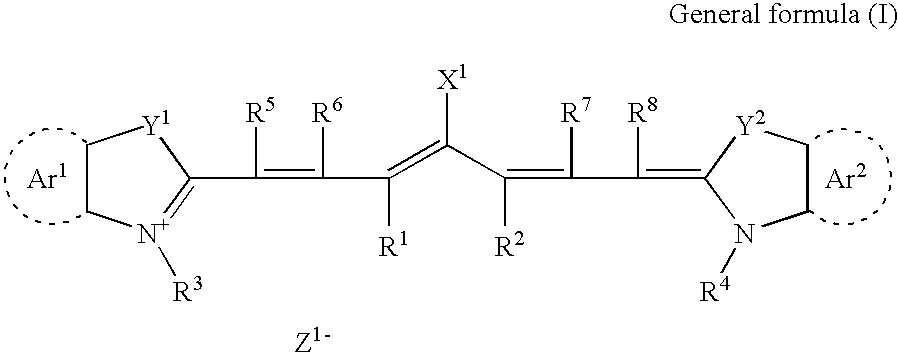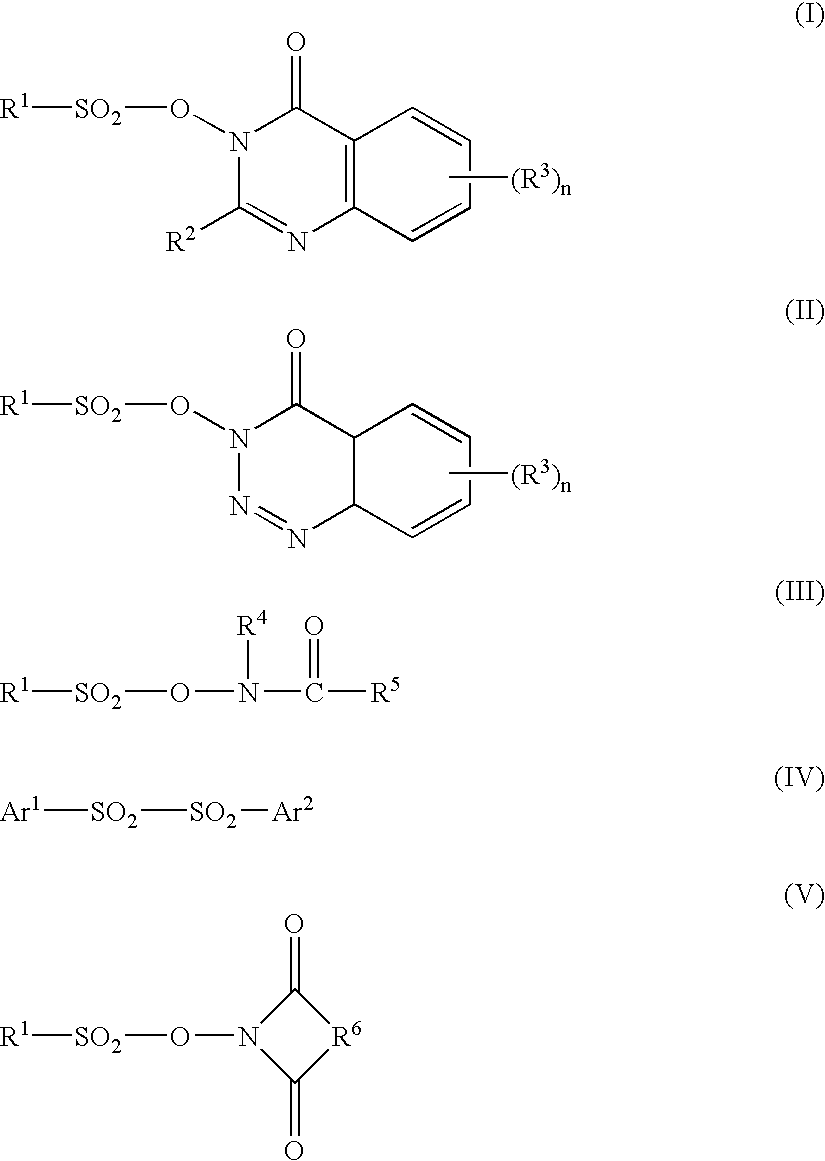Then, since the hardening reactivity of the recording layer particularly at the interface between the support and the recording layer is not sufficient, the contact characteristics of an
image area with the support is not sufficient, thus press life occasionally deteriorates.
Thus, an inadequate inking may occur and the deterioration of press life may be caused by the problem of the insufficient hardening reaction of the recording layer at the interface.
However, since special equipment is required and the process is complicated, it is the status quo that the industry hopes to have a negative type lithographic printing plate capable of forming a better image dispensing with performing a post-heat treatment like this.
Furthermore, in the thermal negative type recording layer where an image is formed by a
laser exposure, the following problems exist.
Since the surface of the support is exposed and becomes a hydrophilic area when the unhardened recording layer of a non-exposed area (a non-
image area) is removed by a developer, scum tends to develop easily at the non-image area due to the attachment of an undesired ink-receptive ink at the time of printing if hydrophilicity of the
support surface is not adequate.
In addition, there is also a problem that if a developer exhausts and the sensitivity of the solution shown by the
conductivity lowers, the
solubility of the recording layer deteriorates and a residual layer is generated, and scum tends to develop easily at the non-image area.
However, each trial cannot reach a sufficiently satisfactory level.
On the other hand, if the average aperture
diameter of the pit of the grained structure with small undulation exceeds 0.2 .mu.m, the aforementioned anchoring effect by the grained structure with medium undulation may not be obtained since the grained structure with medium undulation is broken.
If the average
wavelength of the grained structure with large undulation exceeds 100 .mu.m, inspectability of the printing plate may be impaired since the exposed non-image areas appear dazzling after
exposure and development.
If TP exceeds 3 msec, particularly when
nitric acid electrolyte is used, an aluminum plate is easily affected by trace components in an
electrolyte represented by
ammonium ion or the like that spontaneously increase in electrochemical graining treatment, thus the even graining is not easily performed.
As a result, scum resistance is likely to deteriorate when a lithographic printing plate is prepared.
Further, insufficient adhesion of the support to the image recording layer and uneven thickness of the recording layer applied on the support may often reduce the thermal
diffusion depression effect, leading to inferior sensitivity.
If it is lower than 50 Hz, the carbon
electrode of a main
electrode is easily dissolved, and if it is higher than 70 Hz, it is easily affected by the components of
inductance in a power supply circuit, thus an
electric power cost increases.
If cathodic amount of
electricity is less than 3 C / dm.sup.2, an amount of attached
smut may be insufficient, and 2 if it exceeds 80 C / dm.sup.2, an amount of attached
smut may be too excessive.
If an amount of
etching exceeds that range, it is less economical.
In addition,
dirt may deteriorate during printing.
If it is more than 5 g / m.sup.2, a large quantity of
electricity is needed for the production, which is economically disadvantageous.
If
treatment time is shorter than 1 hour, an effect of soaking treatment may be insufficient.
Attachment of a plate to the plate cylinder of a printing
machine, however, deteriorates if the elasticity is enhanced.
Since a scratch on the surface of an aluminum plate may become a defect when processed into a support for a lithographic printing plate, it is necessary to suppress as much as possible the generation of a scratch at a stage before a surface treatment process to produce a support for a lithographic printing plate is performed.
Although a compound with
large molecular weight or a compound with high hydrophobicity is excellent in sensitivity and layer strength, there may be some undesirable cases in developing speed and deposition in the developer.
However, if the compound ratio is too excessive, undesirable phase separation may occur, a problem in a manufacturing process (for example, a defect in manufacturing attributable to the transfer of the recording layer component and adhesion) caused by the adhesiveness of the image recording layer may occur or a deposition may occur from the developer or the like.
If the content is less than 20 wt %, the strength of the image area is insufficient when the image area is formed.
If the added amount of a cross-linking agent is less than 5 wt %, the durability of the thermosensitive layer obtained by an image recording material may deteriorate and if it exceeds 80 wt %, stability at the time of storage may lower.
If the thickness is less than 0.01 .mu.m or less, it is difficult to prevent the abrasion marks in image recording
layers when the presensitized plate is superimposed for handling.
If the thickness exceeds 8 .mu.m, printing characteristics may deteriorate due to the variation of a printing pressure since the thickness of the backcoat layer varies with its swelling by a
chemical used in the periphery of the lithographic printing plate during printing.
 Login to View More
Login to View More 


